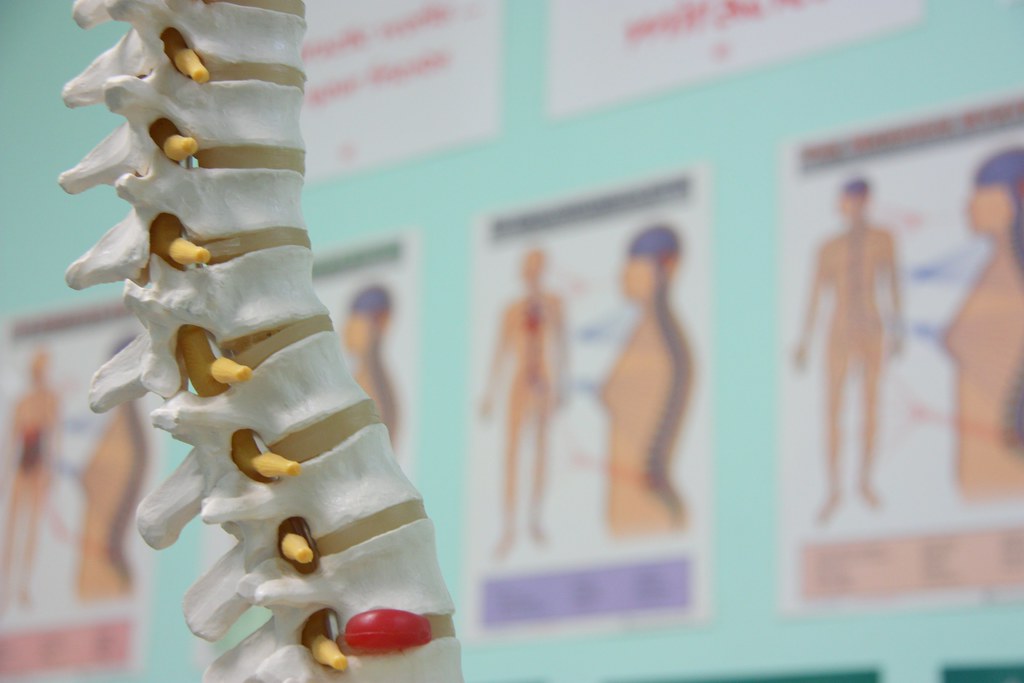What is Ankylosing Spondylitis?
AS is an autoimmune disease. Just like Rheumatoid Arthritis, Celiac’s Disease, Multiple Sclerosis, and Type 1 Diabetes, it’s a type of disease where the body mistakenly attacks itself, thinking that there is a foreign substance like a virus or bacteria. This causes a chronic inflammatory condition that affects several different parts of the body. The primary areas of the body affected by AS are the eyes, skin, nails, gut, and the axial skeleton (the spine!). When the inflammation affects the back, it causes thickening of the tissues around your spine, new bone formation, and joint damage. The ligaments of the spine and the vertebrae become inflamed and the bones of the spine start to thicken and fuse over time. Typically, places where the tendons and ligaments insert onto your bone are affected, like around your sacroiliac joint. AS also affects your posture. As your spine stiffens over the years, you can lose the natural curves of the spine that keep you upright. As a result, it causes you to hunch over and lose some of your ability to fully twist, bend, and extend your spine. Signs to get checked for AS.
Things you can do. First and foremost, if you have any suspicion of AS, seek guidance from a rheumatologist for work up to determine the proper diagnosis. This is primary! If you are diagnosed with AS, then here are a few tips to help alleviate the symptoms from a PT’s perspective. Note that the condition itself cannot be eradicated since it is a progressive chronic condition. However, you can do a lot to help mitigate the symptoms and live with less pain and discomfort. 1. Smoking There is a lot of research that reveals how smoking can play a role in the progression of autoimmune diseases. The smoke in your body can trigger and amplify inflammation, which is a big reason for AS-related back pain. If you smoke, please seek resources and guidance on how you can wean and quit smoking! 2. Posture Because AS affects the spine, your posture is affected over time. As a result, it is even MORE important for those diagnosed with AS to work on their posture by keeping their head stacked right over their shoulders and hips. A PT can do a full body postural evaluation to give you specific exercises to improve your posture. They can also do an ergonomic assessment to make sure you are comfortable sitting in front of a desk and computer. 3. Exercise Maintaining mobility of the spine is essential to helping AS-related back pain! The disease progression worsens when the spine stiffens and begins to fuse over time. Therefore, exercises that help keep your spine mobile are paramount. It is also important to keep the muscles around your hips and spine strong. When the joints are inflamed and damaged, the muscles can act as your cushion to keep you supported and active. While you cannot physically alter the condition of your bones, you CAN keep your muscles as strong as possible to alleviate your symptoms. Your PT will set you up with a personalized exercise program to do daily. 4. Breathing Because AS causes a stiffening of the bones, your ribs and chest wall can become rigid. Overtime, this can prevent you from being able to take proper breaths. Studies show that performing breathing exercises regularly can improve your lung capacity and help your spinal mobility! Why? Because your lungs are enclosed inside your rib cage. And your ribcage attaches to your spine. Taking deep, big, belly breaths and expanding your breathing capacity will directly expand your rib cage and indirectly move your spine! Final Thoughts. Your rheumatologist may prescribe medication and will discuss your full plan of care with you. It is a great idea to seek help from a physical therapist to maintain the mobility in your spine and decrease pain. Your PT can teach you activity modifications to help you move better, sleep better, and live with a better quality of life. I know a lot of the things you are hearing here can sound scary! But know that there is a lot that you can do to gain resources and advice, if you have AS. One great place to get started is to reach out to the Spondylitis Association of America. You can visit their website at www.spondylitis.org for a plethora of resources. You can also attend support group meetings posted on the website where you meet others with AS to gain perspective and advice. You are not alone! References.
Comments are closed.
|
Dr. GaziWelcome! Learn something of value, solve some of your problems, and feel a whole lot better with Sneha Physical Therapy's blog! Categories |
|
Sneha Physical Therapy
Copyright 2022 . All Rights Reserved .
Copyright 2022 . All Rights Reserved .


 RSS Feed
RSS Feed